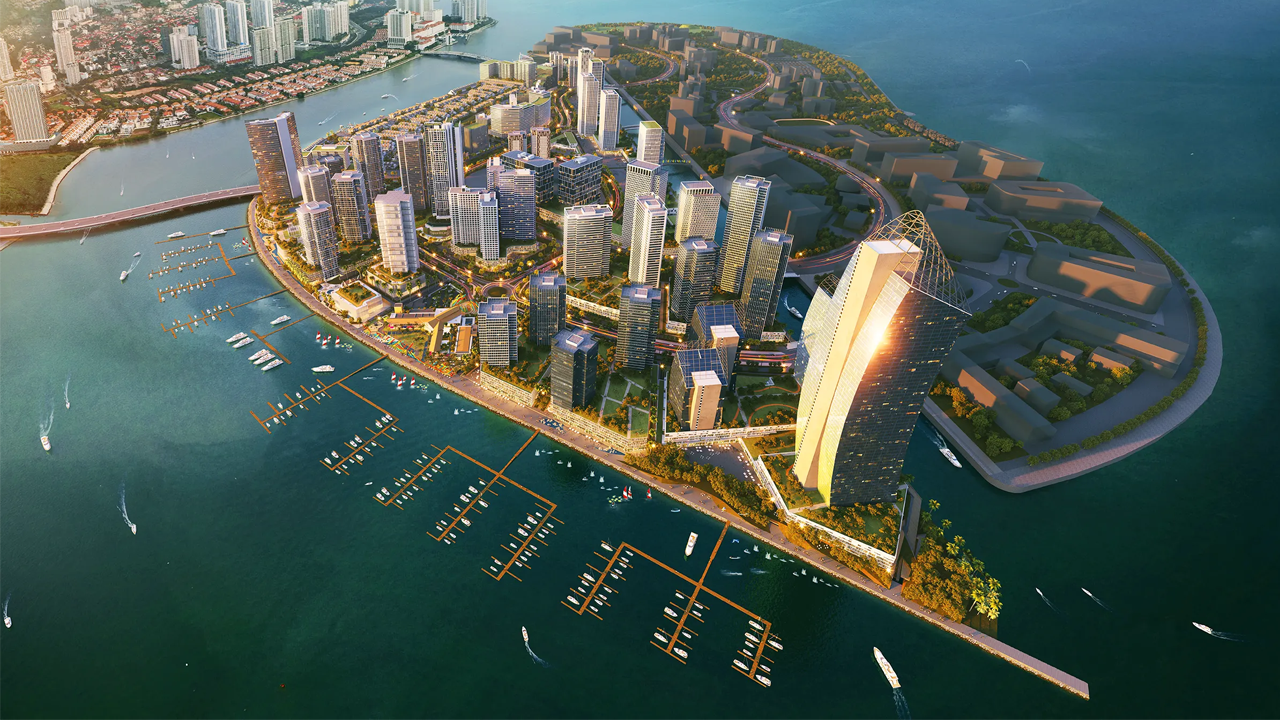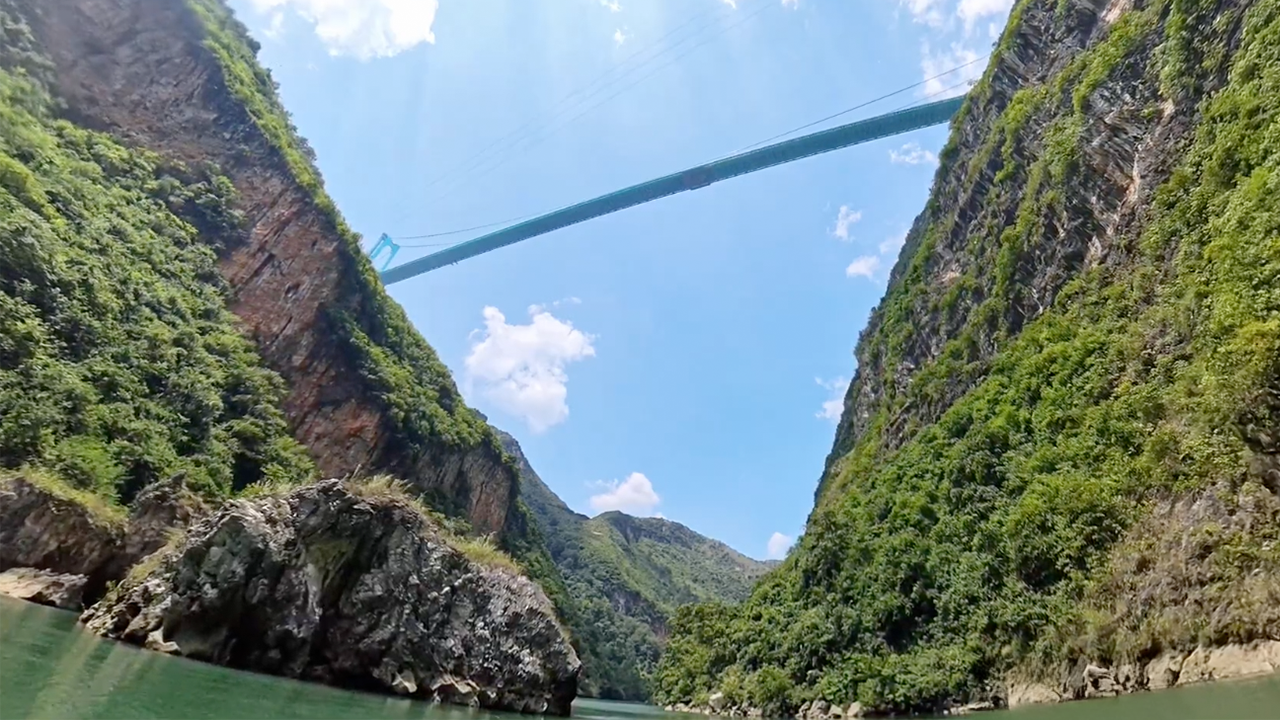The $1BN Megaproject to Save California
- Youtube Views 1,064,475 VIDEO VIEWS
Video narrated by Fred Mills. This video and article contain paid promotion for Bentley Systems.
WATER — it’s a resource that none of us can live without, and in many parts of the world it’s becoming scarce.
But while the worst effects are being felt in developing countries, one region known for its prosperity is facing a water crisis of its own — California.
In 2022, the state recorded one of its driest years ever. 600 square miles of farmland in Sacramento Valley had to be left fallow — with no crops planted — due to low water levels.
But the completion of a massive new water infrastructure project in the city of Sacramento is offering some welcome relief, and it could prove to be a lifeline for California’s agriculture sector. It’s one of America’s most critical industries — supplying more food for the country than any other state.
Costing billions and built using cutting-edge tech, this massive megaproject might just have the power to turn the tide.

Above: California experienced a multi-year drought recently.
Sacramento is the state capital of California and the best place to live in the whole state, apparently. Close to spectacular forests and lakes, and just two hours from San Francisco, you can see why it’s popular.
But while everything appears great on the surface of the city, there are some serious issues lying beneath. The very land that it lies on has been sinking for years, in a region that has just come through one of the worst droughts in its history.
That sinking feeling
What’s causing this? Well, you only need to look at where it’s located — next to the Sacramento River.
When this isn’t flowing properly, like in recent times, many farmers are left with no choice but to start pumping groundwater to irrigate their crops.
And yet, even this source is starting to run out, and removing all that water from the ground is causing the land to subside.
Although there’s no single solution, one nearby megaproject is transforming the way water is reused across the state — including by farmers — and the impact that could make is huge. Since 1982, the 1.6 million people that live in and around Sacramento have relied on the Sacramento Regional Wastewater Treatment Plant.
If you don’t recognise the type of infrastructure, it does a job that we prefer not to think about, but without it, well, things would get very messy, very quickly.

Above: The Sacramento Regional Wastewater Treatment Plant was originally built over 40 years ago. Image courtesy of Regional San.
Yes, this is where 135 million gallons of wastewater from sewers and industries in the area is treated every single day, before it’s discharged into the Sacramento River.
That water then flows into the California Delta, where it either becomes groundwater, or ends up in the San Francisco Bay.
The plant quietly went about its business for almost 30 years, but in 2010, that all changed. A permit was issued by the local regulator in charge of water quality that placed heavy restrictions on the amount of ammonia and nitrates allowed in the treated water.
Because this facility wasn’t filtering out enough of these harmful chemicals under the new rules, it would have to undergo significant enhancements.
Meeting the requirements
Fast forward to today, more than a decade and USD $1.7BN later, a huge programme of work to make this critical infrastructure compliant has just finished.
Called the EchoWater Project, it consisted of multiple individual upgrades across this massive site, which is owned and operated by Regional San.
“There were 22 separate projects, all supporting or enhancing the process to make it more reliable and more efficient," program manager Vick Kyotani said.
“Essentially we touched every part of the plant from our communications, electrical, chemical water systems.”

Above: The Sacramento River is the longest in California.
Overall, it required more than 40,000 tons of steel and 170,000 cubic metres of concrete overall during construction. A lot of that went towards the Tertiary Treatment Facilities, where the disinfection, and much of the filtration, takes place. It’s made up of over a dozen concrete structures, pumping stations, electrical installations and more.
But at the centre of the plant, now the second largest of its kind in the United States, is the BNR. That stands for Biological Nutrient Removal facility. It consists of eight giant basins filled with special tubes, which release oxygen into the wastewater, allowing bacteria to form.
The bacteria’s task is to remove organic matter, 99% of the ammonia and 89% of nitrogen from the water. This means the treated water that comes out at the end now meets those requirements set back in 2010.
The process
How does the whole system work, I hear you cry? Well, here’s a very basic summary. First, the unprocessed wastewater comes into the inlet works and primary sedimentation tanks.
It’s where larger pieces of organic matter and small grit particles are removed, and the sludge and scum are filtered out. Lovely.
Then, it enters the BNR where the bacteria do their thing. After that, it moves on to these enormous tanks called clarifiers, where the bacteria are taken back out. Next, the water is filtered one more time, before it’s disinfected with chlorine and then neutralised.
That’s it — the water is now ready to be introduced to the river, it’s safer for the environment than before, and soon those farmers will be benefiting in a big way. More on that in a bit.

Above: The Biological Nutrient Removal facility was the most significant part of the upgrade. Image courtesy of Regional San.
So, what about the construction? Well, it began back in 2015, and took seven years. With several projects happening at the same time across a site that had to remain operational throughout, the planning and management of the build was incredibly complex.
“For what we were trying to do, it was very compressed. There was overlapping design and construction projects through the life of the programme,” Kyotani recalled.
“We had to pay very, very close attention working closely with the operations staff on all the various tie-ins to the processes to make sure that we can continue operations.”
Vick and his team had to find a way to prepare for all the necessary shutdowns. They also knew they would need some kind of technology to help them plan the many huge construction sequences.
Keeping on track
The solution was a digital twin of the facility created using SYNCHRO and iTwin software from Bentley Systems. Designed and supplied by Project Controls Cubed, a local digital construction specialist, the digital twin is a complete virtual replica fully synced with every aspect of the physical site and its many components.
“We had a very strict concrete pour requirement on this project and these were water holding structures — massive water holding structures — so we really couldn’t afford a lot of leaks,” Jeff Campbell said. He’s director of virtual planning at Project Controls Cubed. “Just trying to schedule or plan those sequences is in our opinion impossible without the use of a digital twin.”

Above: The digital twin of the EchoWater facility. Image courtesy of Project Controls Cubed.
Various users, from designers to contractors could use the digital twin to prepare for and carry out all the tasks that had to be done, identifying problems in advance and working in real time.
“Can you imagine being able to manage almost 100,000 activities? How can you manage that?” Serelle Corn said. She’s lead program scheduler for Project Controls Cubed.
“The digital twin really gave us that platform that we were able to catch an error just like that. Anybody can see it, right? In a matter of seconds, you can catch it.”
Campbell added: “What we did is we put situational awareness in front of these amazingly brilliant people, which allowed them to make time sensitive decisions that were proactive instead of reactive.”
With the digital twin it was possible to take regular 3D models and integrate them in a 5D environment.
“What the digital twin does is it elevates it and takes it to a whole other level. You're taking your 3D object — your static object — and you're tying it to a schedule activity,” Corn explained. “Not only that, you can study the costs and the budget.”
You see, keeping costs down was essential, and not just because the project was part-funded by Sacramento area customers, whose bills went up to help pay for the project.
Coming in under budget could allow the excess cash to be spent on other upgrades, and that’s exactly what happened, to the tune of $400M. Yes, a large public infrastructure scheme that actually cost less than what it was supposed to.
Looking ahead
Now, the leftover money is being used to fund the next step — one of the largest agricultural reuse projects in the US. Regional San is building a new pump station and pipelines that will direct that cleaner water from the upgraded plant down to southern Sacramento County. Up to 16,000 acres of land used for agriculture or habitat conservation will be irrigated with this new supply.
That would mean a lot less groundwater pumping, allowing levels to recover, along with more sustainable farming. In a region desperate for a new water source after years of lost farmland and falling crop revenues — finally, some good news.

Above: The first phase of a new programme to direct treated water to farmers south of Sacramento is due to complete in 2025. Image courtesy of Regional San.
A water treatment facility might not sound like a big deal, but this is a kind of infrastructure that’s as critical to keeping our world running as any other, and they don’t come much more important than this one.
When droughts and shortages are likely to become more common in the future, the city of Sacramento at least might be about to see one of its biggest problems washed away.
This video and article contains paid promotion for Bentley Systems. Learn more about how Bentley is advancing the world’s infrastructure for better quality of life here.
Additional footage and images courtesy of Regional San, Project Controls Cubed, ABC10 News, BBC News, CTV News, DW News, Google Earth and Los Angeles Times.
We welcome you sharing our content to inspire others, but please be nice and play by our rules.








